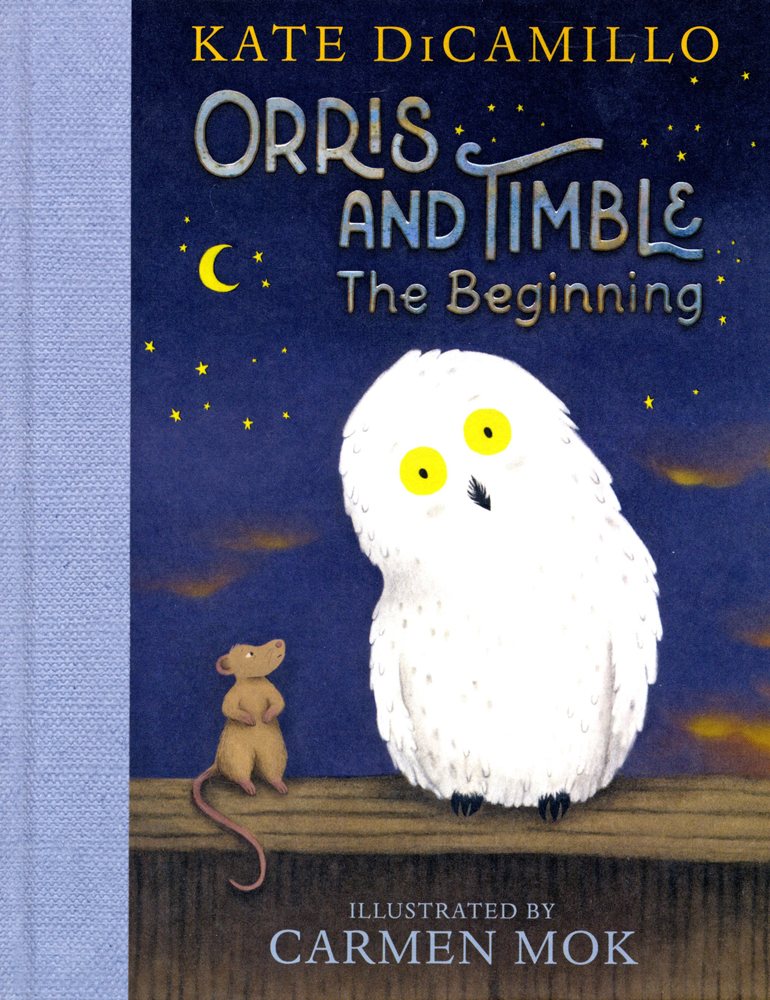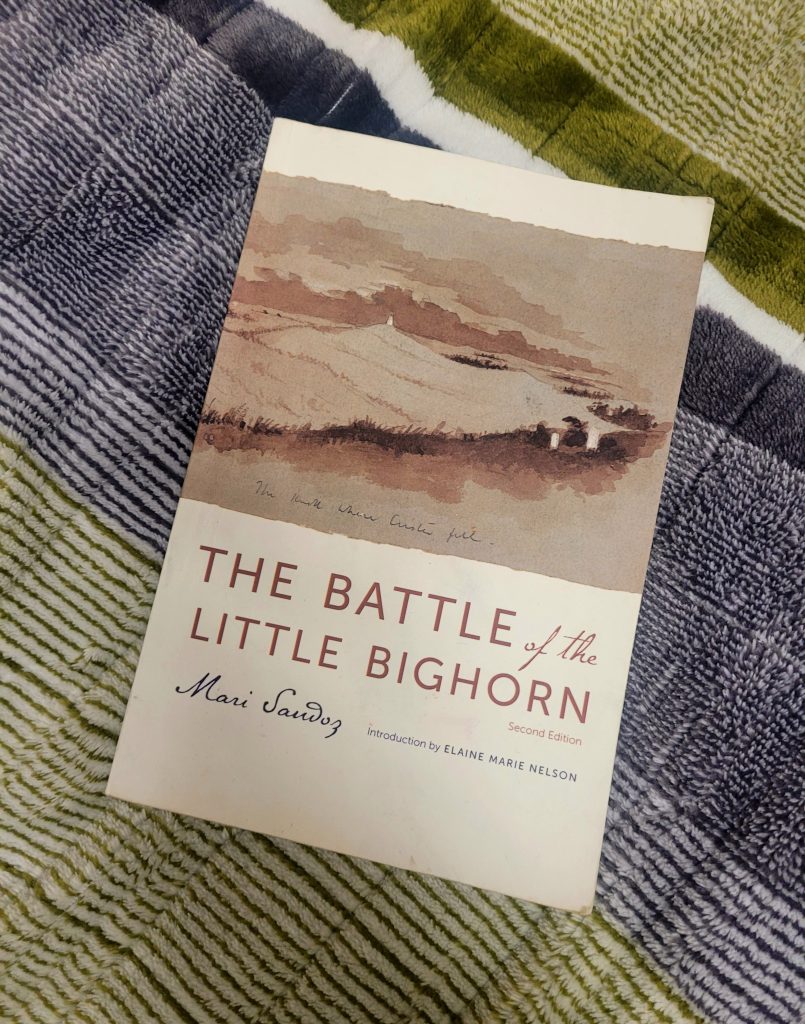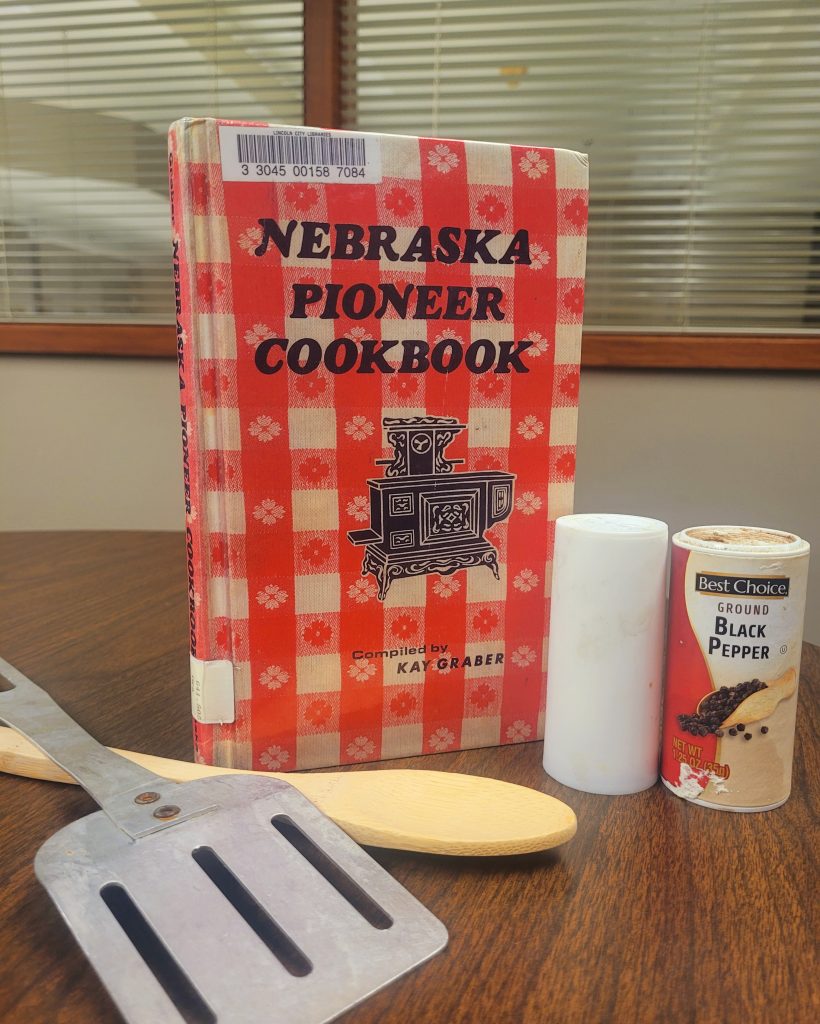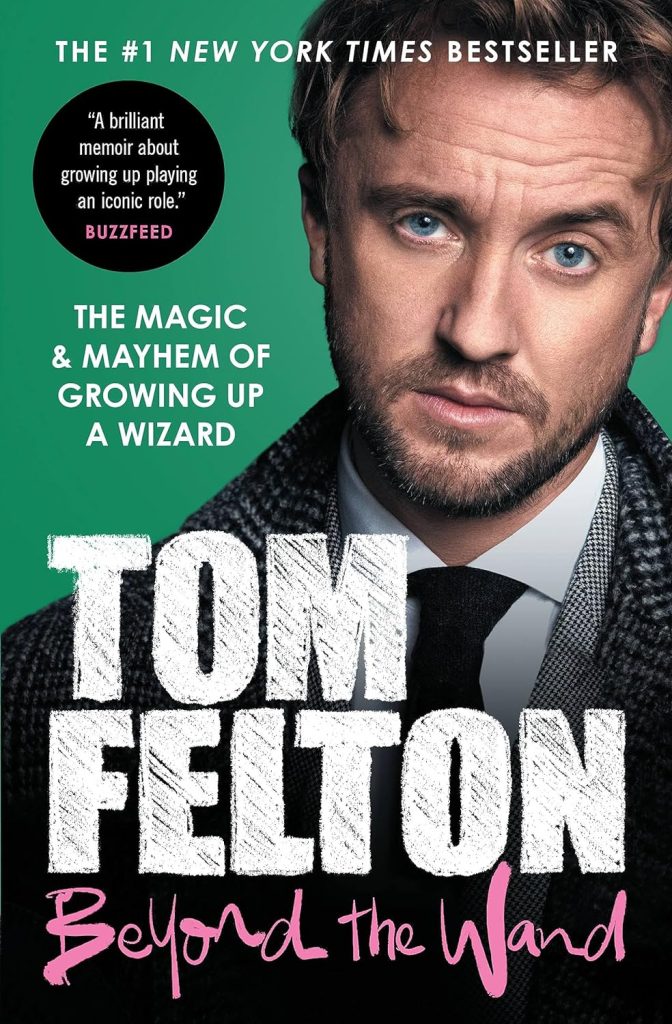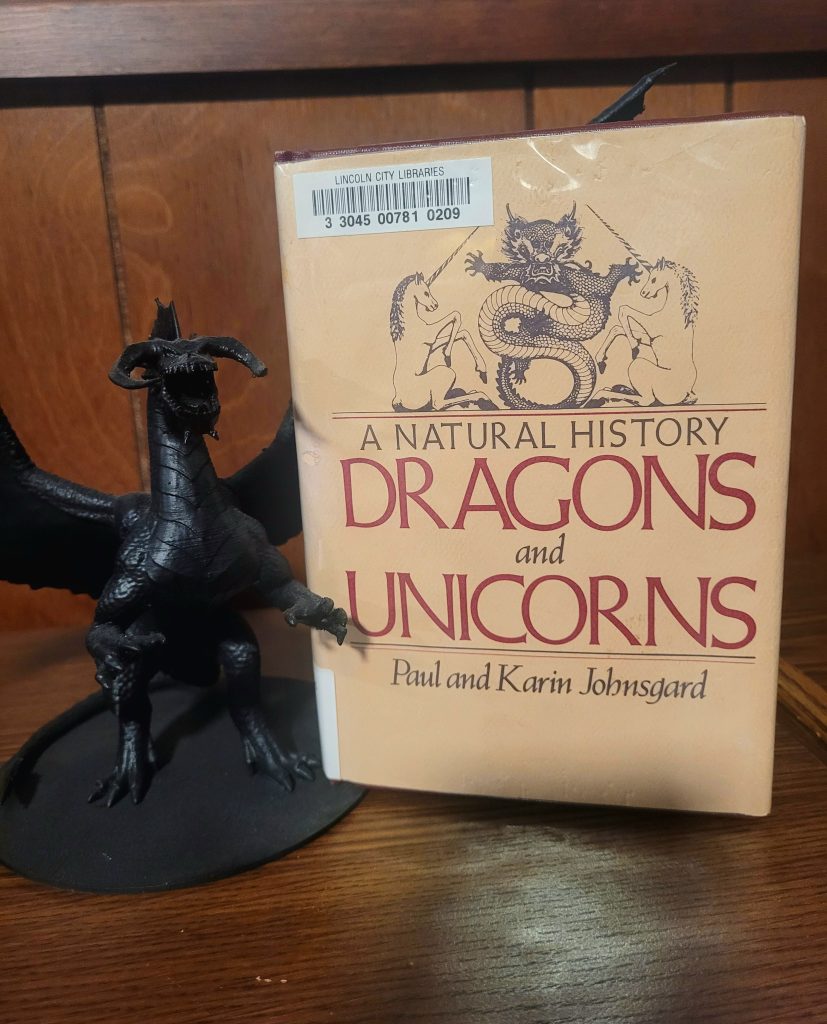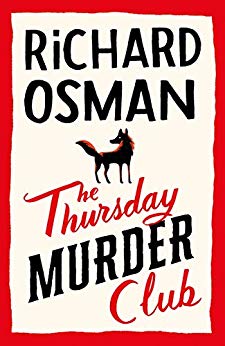Search the Blog
Categories
- Books & Reading
- Broadband Buzz
- Census
- Education & Training
- General
- Grants
- Information Resources
- Library Management
- Nebraska Center for the Book
- Nebraska Memories
- Now hiring @ your library
- Preservation
- Pretty Sweet Tech
- Programming
- Public Library Boards of Trustees
- Public Relations
- Talking Book & Braille Service (TBBS)
- Technology
- Uncategorized
- What's Up Doc / Govdocs
- Youth Services
Archives
Subscribe
Category Archives: Books & Reading
Book Club Spotlight – Funny Boy
June 28th will be the 54th anniversary of the Stonewall Uprising. Although we have come so far in equal rights for the LGBTQ+ community, it’s important to remember our history and those who came before us as we celebrate Pride Month. Funny Boy by Shyam Selvadurai is a historical fiction novel taking place in Colombo, Sri Lanka when the Tamil diaspora was the target of racism and violence leading to the Black July pogroms and the Sri Lankan Civil War (1983 to 2009). Funny Boy is a work of courage in the face of anti-LGBTQ+ laws in Sri Lanka, that author Selvadurai faced before he emigrated to Canada to escape persecution. His novel portrays love and humanity in a time of violence, and was awarded the Lambda Literary Award for Gay Men’s Fiction and the Books in Canada First Novel Award.
In the politically strife 70s and 80s Sri Lanka, a young boy must come to himself in his queerness as political and ethnic tensions threaten him and his affluent Tamil family. Though he is not aware of it himself, Arjie’s supposed homosexuality labels him as “funny” when he shows his feminine side and dreams often about the romance of true love. When he meets soon-to-be bride Radha Aunty, Arjie’s perception of love shifts as she falls for a Sinhalese man and their relationship threatens the family. As he matures, Arjie also falls for a Sinhalese boy and has to look past the shame to find himself as the ambivalent world violently crashes around them.
“For how could loving Shehan be bad? Yet if my parents or anybody else discovered this love, I would be in terrible trouble”
Shyam Selvadurai
This coming-of-age novel reminds us that the personal is political, and even in these war-torn and horrifying situations, queer people and love still exist and persevere. Like recent spotlight, Pachinko, Funny Boy follows international history and how it affects everyday people. Book Groups can discuss and learn Sri Lankan history and the story of human perseverance in the face of deadly circumstances, as well as the many themes and critiques of racism, class, gender discrimination, patriarchal structures, and, of course, homophobia. Selvadurai has had a lasting impact as a post-colonial author, with not only Funny Boy having both radio drama and movie adaptations but also having a species of spider named after him by Sri Lankan researchers (Brignolia shyami) which he expressed gratitude for the recognition from his homeland and for his work for reconciliation.
For more information on the history of Sri Lanka, the Civil War, and Tamil persecution:
To see more of our LGBT+ & Queer book club titles, visit the link here.
If you’re interested in requesting Funny Boy for your book club, you can find the Request Form here. There are 10 copies available. (A librarian must request items)
Selvadurai, Shyam. Funny Boy. McClelland and Stewart. 1994
#BookFaceFriday “Finlay Donovan Rolls the Dice” by Elle Cosimano
Feel the wind in your hair with #BookFaceFriday!

You know what every good road trip needs? A great read, like this week’s #BookFace, “Finlay Donovan Rolls the Dice: A Novel” by Elle Cosimano ( Minotaur Books, 2024.) The fourth book in Cosimano’s Finlay Donovan series, it’s available for checkout as an eBook and as an Audiobook from Nebraska Overdrive Libraries, along with the first three books in the series. This oddball adventure, featuring themes of friendship, motherhood, and complicated relationships keeps Finlay and her nanny/partner-in-crime Vero’s story rolling.
“Cosimano’s fourth Finlay Donovan novel is brilliantly plotted, bringing the witty humor and thrilling, nail-biting action the series is known for while also tackling emotional family dynamics. Cosimano knocks this one out of the park. Highly recommended for all fans of the series.”
— Booklist (starred review)
Find this title and many more through Nebraska OverDrive! Libraries participating in the Nebraska OverDrive Libraries Group currently have access to a shared and growing collection of digital downloadable audiobooks and eBooks. 194 libraries across the state share the Nebraska OverDrive collection of 26,898 audiobooks, 36,794 ebooks, and 5,133 magazines. As an added bonus it includes 130 podcasts that are always available with simultaneous use (SU), as well as SU ebooks and audiobook titles that publishers have made available for a limited time. If you’re a part of it, let your users know about this great title, and if you’re not a member yet, find more information about participating in Nebraska Overdrive Libraries!
Love this #BookFace & reading? Check out our past #BookFaceFriday photos on the Nebraska Library Commission’s Facebook page!
Friday Reads: “Orris and Timble: The Beginning” by Kate DiCamillo
Book 1 in a new series, Orris, a rat, lived in an abandoned barn. He was happy there. One of his prized possessions was an old sardine can. It had a picture of a sardine king on the can, and the king said, “Make the good and noble choice.” He contemplated this advice regularly.
One evening Orris hears a horrible screech and a cry for help. Orris looked out from his nest to see a young owl caught in a mousetrap. The rat is not planning on helping his natural enemy until he recalls the sardine king’s advice. Slowly he moves towards the owl, asking him to stand completely still. Next to the talons, Orris pulls on the metal of the trap and tells the owl to move. When the owl is free, Orris is terrified and cowers, then creeps slowly to his nest.
But, rather than prey, the owl, Timble, thinks of Orris as a friend. Orris tells Timble the fable of The Lion and the Mouse. Soon they plan to meet every evening for more stories.
A marvelous introduction to the two main characters and the wonder of storytelling. “Make the good and noble choice” could show up again in future titles of the series.
This is an early chapter book aimed at readers who are ready for something longer than a beginning reader but not ready for a full-fledged novel, though many readers will enjoy it.
Orris and Timble: The Beginning, by Kate DiCamillo. Candlewick Press, 2024.
#BookFaceFriday “Miss Morissa” by Mari Sandoz
We’ve struck gold this #BookFaceFriday!
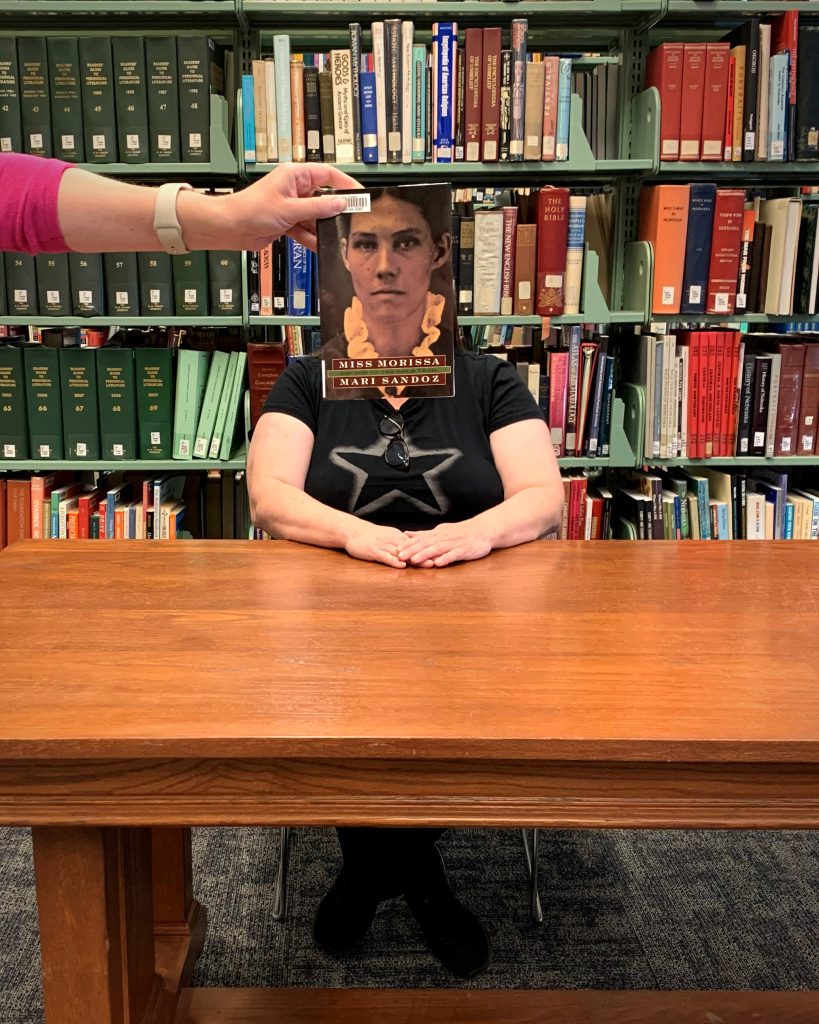
This week’s #BookFace is “Miss Morissa: Doctor of the Gold Trail” by Nebraskan author Mari Sandoz; it tells the story of a young pioneering woman doctor on the Nebraska frontier in the 1870’s as rumors of gold strikes begin to spread. This dramatic and moving historical fiction novel is available as a part of our Book Club Kit collection, along with eight other books written by Mari Sandoz.
“Beautifully written and full of striking images and masterful descriptions.”
—New York Times
This week’s model is model is our brand-new Computer Help Desk Support, Kim Ramsey! Kim recently transferred to the Library Commission from Nebraska Dept. of Health and Human Services. She reached 25 years of state employment in May and most of that time has been providing computer and technical support to state employees and other agencies. Kim lives in Lincoln with her husband Mike, and their two cats, Mei and Juno, who are their entertainment and sometimes their alarm clock. Science fiction is her favorite genre and she is currently re-reading “The Expanse” series by authors Daniel Abraham and Ty Franck. Gardening and reading are her stress relief, and garden/plant talk is probably the best way to distract her from whatever she’s supposed to be doing. If you get the chance, say hello to Kim!
Book Club Kits Rules for Use
- These kits can be checked out by the librarians of Nebraska libraries and media centers.
- Circulation times are flexible and will be based upon availability. There is no standard check-out time for book club kits.
- Please search the collection to select items you wish to borrow and use the REQUEST THIS KIT icon to borrow items.
- Contact the Information Desk at the Library Commission if you have any questions: by phone: 800/307-2665, or by email: Information Services Team
While we don’t have this particular title available through Nebraska OverDrive Libraries, we do have a significant number of the author’s other works available. You can find eleven books by Mari Sandoz, including the 2007 One Book One Nebraska selection “Crazy Horse” on Nebraska Overdrive! Libraries participating in the Nebraska OverDrive Libraries Group currently have access to a shared and growing collection of digital downloadable audiobooks and eBooks. 194 libraries across the state share the Nebraska OverDrive collection of 26,898 audiobooks, 36,794 ebooks, and 5,133 magazines. As an added bonus it includes 130 podcasts that are always available with simultaneous use (SU), as well as SU ebooks and audiobook titles that publishers have made available for a limited time. If you’re a part of it, let your users know about this great title, and if you’re not a member yet, find more information about participating in Nebraska Overdrive Libraries!
Love this #BookFace & reading? Check out our past #BookFaceFriday photos on the Nebraska Library Commission’s Facebook page!
Posted in Books & Reading, General
Tagged book club kit, Book Covers, bookfacefriday, Historical Fiction, libraries, Mari Sandoz, Miss Morissa, Nebraska Author, Reading
Leave a comment
Friday Reads: Poor Deer by Claire Oshetsky
Perhaps what is most important is not the truth of our lives, but the stories we tell.
Or, as Poor Deer might argue, that’s a pretty saying that liars might repeat in an attempt to absolve themselves of guilt; nothing is more important than the truth.
Poor Deer is a quick-read of a novel. It is the confession and story of Margaret Murphy, who experienced an unthinkable tragedy when she was four years old. It is a strange literary punch of a novel, pirouetting on the incredible mutability and haze of a young child’s memory.
I won’t spoil the central event of Poor Deer; what really happened the day of the schoolyard flood in that small mill-town is not definitively admitted until the final pages of the novel. But it is a tragedy regardless of what happened, and the confusing swirl of emotions and accusations, memory and blame, sweeps poor little Margaret away and drowns her life in guilt.
There is a fascinatingly light-touch to the story; Oshetsky relies on an older Margaret’s narration of the story – flipping back between third and first person perspective — and in doing so avoids the common, belief-breaking pitfall of “a child would not think or speak like that.” The language and tone of the novel itself is childlike and ephemeral, straightforward and naïve, poetic and blunt, and it softens the blow of what is a very depressing story. Don’t get me wrong: it still is a depressing story, in which awful things happen. It is depressing in the way that classic fairytales are depressing, and I think that was Oshetsky’s intent. But it is not entirely depressing, nor is it unrealistic or cruel. Oshetsky does not batter Margaret beyond the possibility of recovery, or beyond redemption.
Margaret, who is now a young woman on the eve of another tragedy, is an unreliable narrator kept in check by the titular “Poor Deer” — an apparition who has been following Margaret since her childhood, who will not be dismissed until Margaret faces the truth. There are delightful and heartbreaking passages in which Poor Deer commands, “Again, again,” and Margaret starts again and tells her story honestly. “Is she real?” Margaret asks as she writes her confession under the weepy, vengeful gaze of the deer. “Does is matter? She is part of who I am.”
Oshetsky, Claire. Poor Deer: A Novel. Ecco, an Imprint of HarperCollinsPublishers, 2024.
Friday Reads: “Station Eternity” The Midsolar Murders Series by Mur Lafferty
Station Eternity by Mur Lafferty is combination cozy mystery and science fiction, combining both, very well. In what’s usually termed near future, Mallory Viridian is a murder magnet. However, in real life, being one makes you a suspect, not a “charming amateur detective” (book blurb), your friends and relatives shun you, and you fear for their lives.
Despite being able to solve nearly all of the murders around her, and prove her own innocence, she can’t join law enforcement or become a private detective. She finally has enough of life on Earth, and moves off Earth to Station Eternity, a sentient space station.First contact officially occurred shortly before this time with Adrian Casserly-Berry who becomes the human ambassador to Station Eternity. On Earth, he had become an expert in several languages and a professor at a university. He’s always made lists of things he hates. Very long lists. He is, unfortunately, an awful choice to be ambassador.
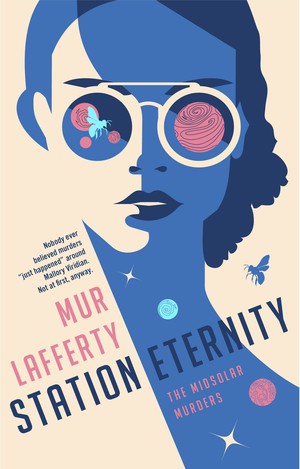
And while first contact had occurred, no restrictions on sightseers and vacationers are in place, so aliens are visiting, without warning, and in random parts of our world. Which is how Xan (Alexander) Morgan, winds up abducted by a trio of rock like Gnies humanoids, who are on a quick trip to Earth. The one drunk on lava has decided to pick him up as a pet, or something. Since he’s in the army, he’s AWOL, a murder witness, possible suspect, and an alien abductee. No probing is done, but a translating bug is inserted in his ear, so he can understand the aliens around him. Their trip to Earth is a quick one, to Earth and right back to Eternity Station, no side trips. All of which is a subject of conversation among the three Gneis.
So, three humans on the station, two officially, several aliens of different types, most with intelligent symbionts of some kind. The soon to arrive shuttle full of humans makes Mallory panic, because, of course, murder victims and murderers are the probable result of them coming here. Xan doesn’t really see the harm (doesn’t believe her.) And Adrian attempts to capture Mallory, to give to whoever is coming on the shuttle. In addition, possibly he already knows his replacement is on it.
In the meantime, the aliens grumble about the strange, wet, humans, and distrust them for their lack of symbionts. Start Trek, this isn’t. But it is a fun, different world, and well built. The three Gneiss from the abduction of Xan are friends, but one of them is being kept on the station against her will by her grandfather, who has become a shuttle. (Yes, a Gneis rock person became a functioning space going vessel.) She’s come up with a plan to move on to be mobile herself, but it will upset the entire population of her people on the station.
Then the station’s symbiont is murdered, just as the shuttle from Earth arrives, and is attacked, leaving only 11 survivors. It spirals quickly out of hand from there. It’s an entertaining read, difficult to explain past “cozy mystery and science fiction blend”, but even more interesting for being complex.
Next in the series, Terminal Chaos is out, just as wild a ride as the first title.
Station Eternity, Midsolar Murders Series, by Mur Lafferty, 2022, Ace, an imprint of Penguin, Trade Paperback, 453 pages, $17 ISBN 978-0-593-09811-0
#BookFaceFriday “Defiant” by Brandon Sanderson
Adventure awaits for this #BookFaceFriday!
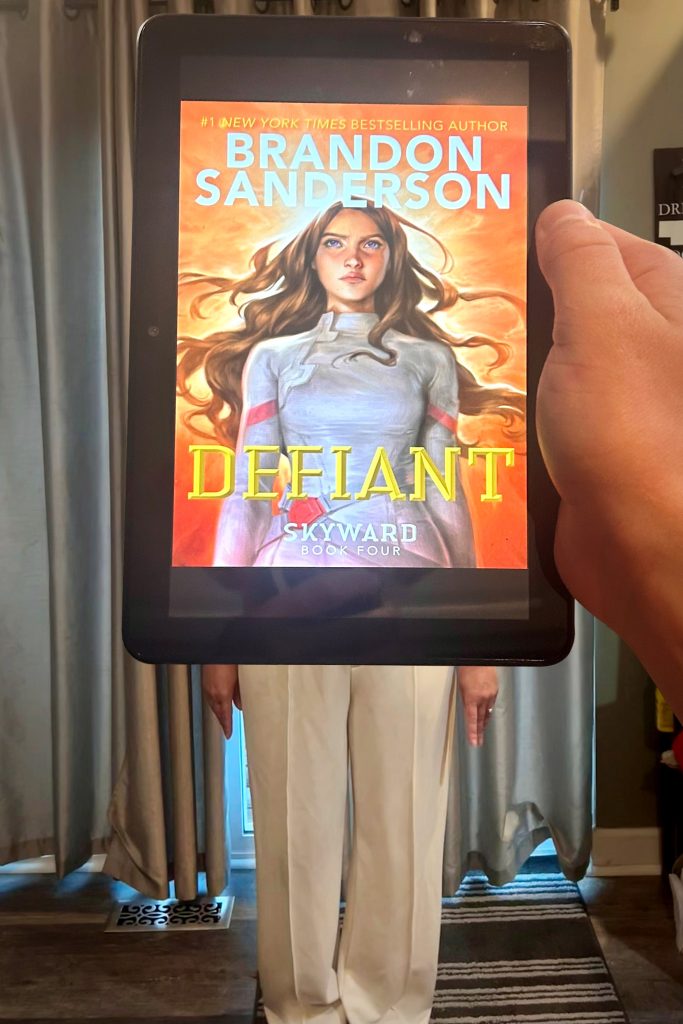
With another school year ending, that can only mean one thing: Summer Reading Program is upon us! This week’s #BookFace is “Defiant” by Brandon Sanderson (Random House Children’s Books, 2023), the fourth book in his Skyward series.
It’s available for checkout as an eBook from Nebraska Overdrive Libraries; it can be found in the “Adventure Begins at your Library” collection. This action-packed epic Sci-fi series is an excellent YA pick for both boys and girls and fits perfectly in this year’s Summer Reading Program theme.“Sanderson delivers a cinematic adventure that explores the defining aspects of the individual versus the society…[and] fans of [his] will not be disappointed.”
— School Library Journal
Find this title and many more through Nebraska OverDrive! Libraries participating in the Nebraska OverDrive Libraries Group currently have access to a shared and growing collection of digital downloadable audiobooks and eBooks. 194 libraries across the state share the Nebraska OverDrive collection of 26,174 audiobooks, 36,611 ebooks, and 5,210 magazines. As an added bonus it includes 130 podcasts that are always available with simultaneous use (SU), as well as SU ebooks and audiobook titles that publishers have made available for a limited time. If you’re a part of it, let your users know about this great title, and if you’re not a member yet, find more information about participating in Nebraska Overdrive Libraries!
Love this #BookFace & reading? Check out our past #BookFaceFriday photos on the Nebraska Library Commission’s Facebook page!
#BookFaceFriday “Better Living Through Birding” by Christian Cooper
Keep your eye’s peeled for this #BookFaceFriday.
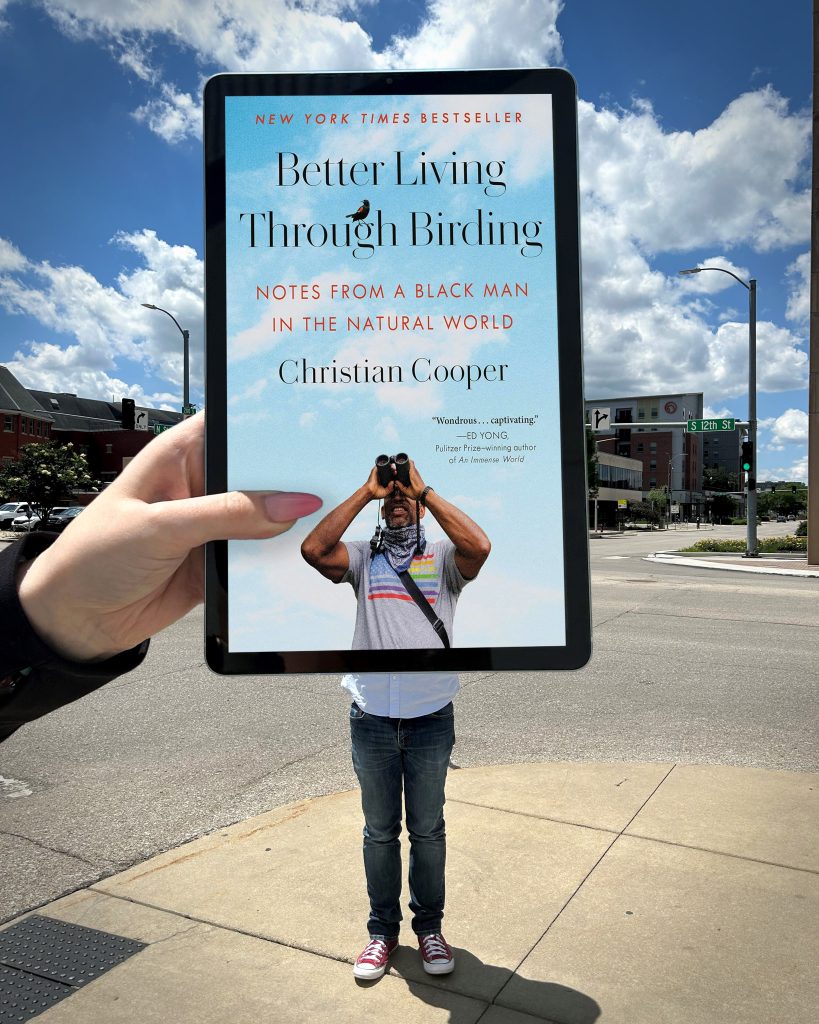
This week’s #BookFace is perfect for those of us who are outdoorsy, as in we like a nice cocktail on the patio. “Better Living Through Birding: Notes from a Black Man in the Natural World” by Christian Cooper (Books on Tape, 2023), is the nonfiction story of a New Yorker bird watching in Central Park. It’s available for checkout as an Audiobook from Nebraska Overdrive Libraries, it can be found in the “Best Titles of 2023” collection.
“This unforgettable memoir, featuring fun birdsongs between chapters, is well narrated by Cooper, the science and comics writer who was falsely accused of threatening a white woman in Central Park in 2020 as she was walking her dog and he was bird-watching. This brilliant multidimensional nonfiction debut by Cooper, now the host of National Geographic’s Extraordinary Birder, should be cherished by all memoir fans and will strike a chord with his fellow sci-fi and comics fans.”
—Library Journal
Find this title and many more through Nebraska OverDrive! Libraries participating in the Nebraska OverDrive Libraries Group currently have access to a shared and growing collection of digital downloadable audiobooks and eBooks. 194 libraries across the state share the Nebraska OverDrive collection of 26,174 audiobooks, 36,611 ebooks, and 5,210 magazines. As an added bonus it includes 130 podcasts that are always available with simultaneous use (SU), as well as SU ebooks and audiobook titles that publishers have made available for a limited time. If you’re a part of it, let your users know about this great title, and if you’re not a member yet, find more information about participating in Nebraska Overdrive Libraries!
Love this #BookFace & reading? Check out our past #BookFaceFriday photos on the Nebraska Library Commission’s Facebook page!
Friday Reads: Beyond the Wand by Tom Felton
Malfoy. The name alone sparks hatred among the Harry Potter community. Unless you’re a Slytherin. Then I guess it strikes hero worship. Maybe envy? In the Harry Potter movies, Tom Felton embodied this boy-bully wizard character with his whole shriveled up heart and blackened soul. The smallest, well-timed facial expressions almost made me feel sorry for a darkened boy wizard, shaped by a domineering father. Tom Felton never appeared on screen. Only Malfoy.
Then Tom Felton wrote a memoir. I almost didn’t read Beyond the Wand: The Magic and Mayhem of Growing Up a Wizard because I love to hate Malfoy so much. I didn’t want to watch the movies and know the mix of pain and triumph behind the scenes. I didn’t want to be yanked out of my carefully crafted fantasy land by looking at the man behind the wizard. But I decided to stir that cauldron anyway.
Now I wonder if Felton would have made the same life choices if he had known he would likely hear wizard puns until he was old and gray. Probably. There are worse ways to go down in history. He has plenty of wizard puns himself. I had seen him on the Graham Norton Show and other chat shows with the stars, but his memoir made him more real than any TV show. In my mind he was still a teenager, but he’s actually 36, a year older than me. I know actors age beyond their movies, but I never realized he was so close to my own age all these years.
The collision of fantasy and reality felt unnatural. There’s a reason I never want to meet the actor. They’re never like the characters you know and love. Or hate. It took about four or five chapters for me to see Tom instead of Malfoy. I know I’m not the only one with this problem because Tom still gets death glares from Gryffindors on a regular basis. Even when he tried to go back to his regular school life in between filming movies. The Muggle is real. Ahem. Struggle.
When he’s just Tom, it’s fascinating to learn how he sees the wonderful world of Harry Potter as a tool to bring people together. He believes in unity and shared purpose, just like his co-star Emma Watson. Off screen, he is a whole person who struggles with depression and figuring out who he is and what’s next in life. Regardless of common human struggles, Tom’s overall outlook on life and the world is something everyone should aspire towards.
Long story short, I’m glad I lifted the curtain and saw the man behind the wizard. Incredible things can happen when you decide to stir the cauldron.
Felton, Tom. Beyond the Wand: The Magic and Mayhem of Growing up a Wizard. Grand Central Publishing, 2022.
Book Club Spotlight – The Rim of the Prairie
Today, as we prepare for another Nebraska summer, we will be reading a classic of Nebraska literature, Rim of the Prairie by Bess Streeter Aldrich. Born in Iowa, Aldrich moved to Elmwood, Nebraska, with her husband and child in her late 20s. Aldrich’s writing became a full-time job when her husband passed away in 1925, shortly after sending in the manuscript for what would become her first full-length novel, The Rim of the Prairie. Though not a native Nebraskan, Aldrich fully embraced the state as her own. She was awarded an Honorary Doctorate from the University of Nebraska and inducted posthumously into the Nebraska Hall of Fame in 1973. Her book A Lantern in Her Hand was the 2009 One Book One Nebraska.
Small and midwestern is Maple City when young banker Warner Field retreats to a lonely cabin on the Moore property for a vacation focused on his once great love for writing. While there, he happens upon artifacts of a young girl who once used the cabin. Small journal entries, a china doll, and an old photograph lead him to believe the owner of these items is long passed on. He finds fascination in her lush descriptions of the prairie all around him, her poetic styling and love for her surroundings touch him deeply. Through the journals, he learns of an mysterious tragedy, the girl’s entries abruptly stopping on her 18th birthday as she prepares to run away. Only a day before he departs from the cabin, 22-year-old Nancy Moore steps off the train and arrives home in Maple City for the first time in 4 years after her disappearance.
“There was something about the lunch that was gayer than usual. An atmosphere of fun pervaded it, a sense of exhilaration was upon every one. Nancy Moore seemed in some inexplicable way to be responsible for it. There was something infectious about her approval of life”
Bess Streeter Aldrich
This unassuming Nebraskan mystery romance contains a portrait of rural life during the turn of the century. Maple City and its inhabitants coexist in their own peculiar but charming and folksy ways with their own secrets kept close to their chests. In The Rim of the Prairie, Aldrich weaves her thoughts on life, her love for her husband, and the day-to-day foils and perseverance of prairie life. Appropriate for Book Groups of all ages, readers can enjoy the lush descriptions of the prairie in contrast with the bustling small town trying to stretch its wings into the modern day, and the mystery of the brown shawl. Encouraged to read by my mother, (Happy late Mother’s Day!) The Rim of the Prairie was one of the first books I read that took place in Nebraska. It gave me the words to shape my cultural identity and knowledge of our greater social landscape. As Aldrich said herself, “I tried to do my bit in helping preserve a little of the spirit of these pioneers in fiction”.
If you’re interested in requesting The Rim of the Prairie for your book club, you can find the Request Form here. There are 10 copies available. (A librarian must request items)
Aldrich, Bess Streeter. The Rim of the Prairie. University of Nebraska Press. 1966
Posted in Books & Reading
Tagged book club spotlight, books, Nebraska Authors, Reading
Leave a comment
NCompass Live: Fostering Nature’s Love: Collaborating with Local Author for Community Engagement
Join us on this week’s NCompass Live on Wednesday, May 22 at 10am CT, for ‘Fostering Nature’s Love: Collaborating with Local Author for Community Engagement’.
Friends of the Verde River has introduced its first children’s book, “On the Verde River,” authored by Arizona native Phoebe Fox and illustrated by Jim Fox. This book aims to inspire a love for nature among children aged 2 to 10. As part of our nonprofit’s efforts for Arizona Gives Day, we partnered with Verde Valley First Books to distribute copies of the book to children in need across the Verde Valley. Verde Valley First Books is another nonprofit that is dedicated to providing age-appropriate books to 3 and 4-year-olds living in poverty, currently serving 554 children monthly.
Our outreach includes collaborations with local libraries, participating in story times with activities like making paper otters, and featuring the book in Sunset Park’s StoryWalk in Sedona. Additionally, “On the Verde River” has been recognized by the Library of Congress’ Center for the Book, being listed among “Great Reads from Great Places” and will be showcased at the National Book Festival in Washington, D.C. on August 24, 2024. This recognition enhances the book’s reach and impact, promoting nature appreciation among young readers.
Presenters: Katherine Sirimarco, Fundraising and Communications Coordinator, Friends of the Verde River and Phoebe Fox, Children’s Book Author.
To register for an NCompass Live show, or to listen to recordings of past shows, go to the NCompass Live webpage.
NCompass Live is broadcast live every Wednesday from 10am – 11am Central Time. Convert to your time zone on the Official U.S. Time website.
The show is presented online using the GoTo Webinar online meeting service. Before you attend a session, please see the NLC Online Sessions webpage for detailed information about GoTo Webinar, including system requirements, firewall permissions, and equipment requirements for computer speakers and microphones.
Friday Reads & BookFace Friday: “Making It So” by Patrick Stewart
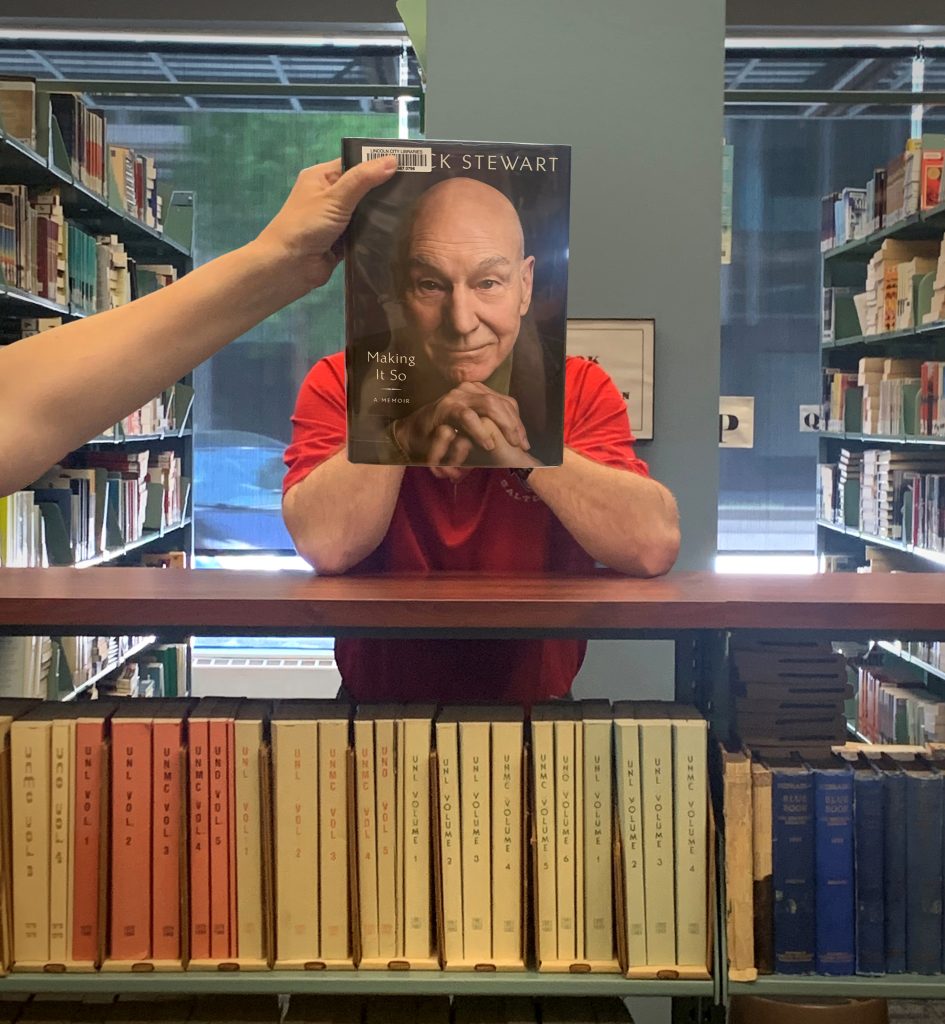
I remember watching and enjoying Star Trek: The Next Generation, starring Patrick Stewart as Jean-Luc Picard, but I wouldn’t call myself a diehard Trekkie. That was no barrier to finding Making It So, Stewart’s recently released memoir, enchanting and delightful. Especially the Audie award-winning audio edition, narrated by Stewart, himself.
As you can imagine, he declaims every word of every sentence with gusto!Stewart (b. 1940) starts at the beginning, describing what it was like growing up working class in Yorkshire in the 1940s and early 1950s. This includes a brief etymology lesson on the Yorkshire dialect he grew up speaking, which, according to Stewart, would have been “nearly incomprehensible to Londoners, let alone Americans.” For instance, he explains that “ata,” which meant “are you,” descended from “art though”; “nowt” meant “nothing”; “Geroff!” meant “leave me alone”; and a chamber pot was a “gazunder,” because it “goes under” the bed. This is relevant since in order to become an actor he had to learn “received pronunciation,” or “RP.” (RP was the standard pronunciation used by BBC broadcasters back in the day.)
Stewart also does a good job conveying the degree to which theater permeated English society at the time. It ranged from amateur dramatics (“am-drams”) at the local level, to a network of regional repertory theaters, all the way up to the Royal Shakespeare Company in Stratford-upon-Avon and the National Theatre in London. And thanks to financial support by the government in the form of grants and scholarships, it was accessible to all—even a working-class boy like Stewart, who got his start locally and then worked his way to the top.
If you are particularly interested in the Star Trek: Next Generation portion of this memoir, you’ll have to be patient, or skip to chapter 16. From there on out (there are a total of 25 chapters in the book), you will be rewarded with lots of insider, behind-the-scenes information about Stewart’s time as Picard. There are also plenty of details about his stint as Charles Xavier in the X-Men movie franchise, and voice work for Seth MacFarlane’s Family Guy and American Dad, as well as other television, film, theater, and social media projects he’s participated in, including reciting all Shakespeare’s sonnets on Instagram during the pandemic lockdown.
While this memoir will appeal to Trekkies, theater nerds, and Anglofiles, there are also elements that will resonate with anyone who has lived a long life filled with both gratitude and regret. In later chapters, Stewart expresses remorse over the demise of his 23-year marriage to his first wife, and the damage that did to his relationship with their children, Daniel and Sophie: “[T]he hurt caused by my split with their mother has never fully gone away,” he writes. After a second brief marriage falls apart, he laments: “And so, another divorce. I felt stupid and responsible.” But he also joyfully expounds on life with his third wife, Sunny Ozell, to whom he’s been married since 2013, as well as his well-publicized friendship with Ian McKellen. Overall, Stewart comes across as a vibrant, engaged octogenarian who, despite living a full, rich life, is still ready for more!
Stewart, Patrick. Making It So: A Memoir. Gallery Books, 2023.
You can find “Making It So: A Memoir” by Patrick Stewart as an eBook in Nebraska OverDrive Libraries! Libraries participating in the Nebraska OverDrive Libraries Group currently have access to a shared and growing collection of digital downloadable audiobooks and eBooks. 194 libraries across the state share the Nebraska OverDrive collection of 26,174 audiobooks, 36,611 ebooks, and 5,210 magazines. As an added bonus it includes 130 podcasts that are always available with simultaneous use (SU), as well as SU ebooks and audiobook titles that publishers have made available for a limited time. If you’re a part of it, let your users know about this great title, and if you’re not a member yet, find more information about participating in Nebraska Overdrive Libraries!
Love this #BookFace & Friday Reads? We suggest checking out all the titles available in our Book Club collection, permanent collection, and Nebraska OverDrive Libraries. Check out our past #BookFaceFriday photos on the Nebraska Library Commission’s Facebook page!
Posted in Books & Reading, General
Tagged Book Covers, bookface, bookfacefriday, Ebook, Friday Reads, Making It So, Memoir, Nebraska OverDrive Libraries, Patrick Stewart, Reading
Leave a comment
#BookFaceFriday “Two Tribes” by Emily Bowen Cohen
This #BookFaceFriday is the best of both worlds!
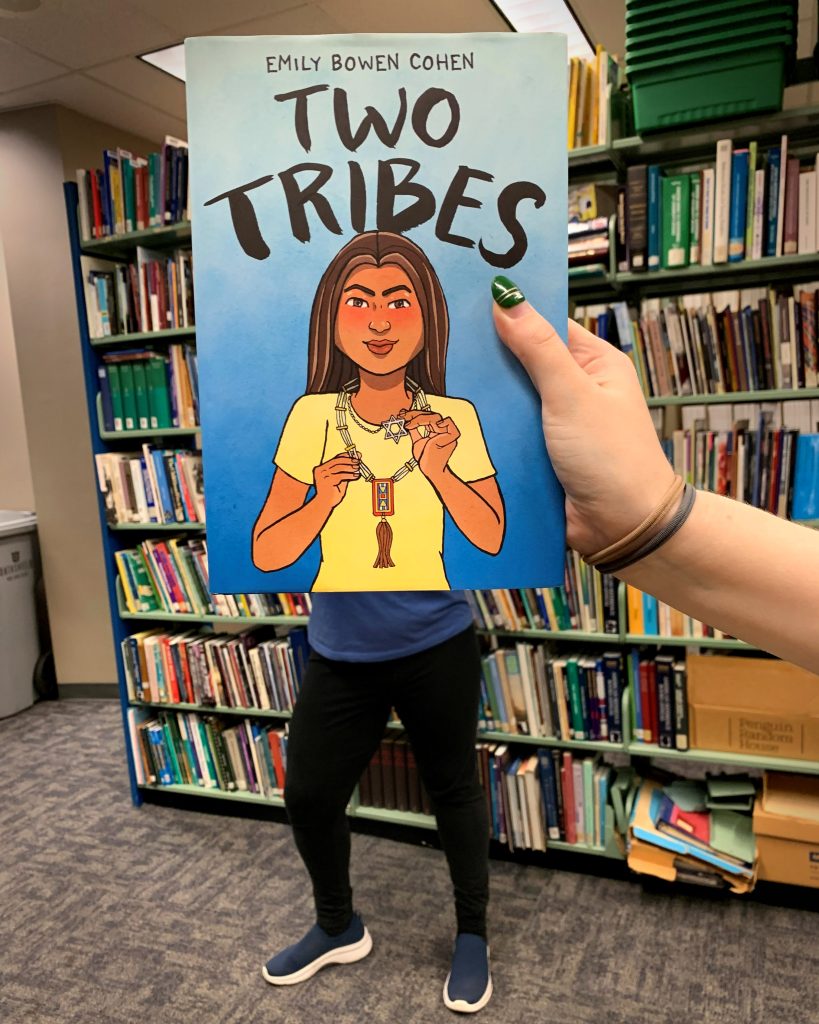
It’s a picture perfect #BookFace, with “Two Tribes” by Emily Bowen Cohen (Heartdrum, 2023) it is a graphic novel geared towards YA or tween readers based on the author’s real life. You can hear all about it on our Children and Young Adult Library Services Coordinator, Sally Snyder’s, “Best New Teen Reads of 2023” NCompass Live presentation. You can watch the recording and find out all about her book lists on the NCompass Live webpage. In this episode, Sally and Dana Fontaine, Fremont High School Librarian, give brief book talks and reviews of new titles recommended to school and public librarians, covering both middle and high school levels, that were published within the last year.
“In Mia’s struggle to reconcile her ancestries, the creator develops a credible portrayal of self-image and acceptance. Plentiful panels rendered in earth tones further enhance this nuanced portrait of Mia’s search for identity.”
—Publishers Weekly
Love this #BookFace & reading? Check out our past #BookFaceFriday photos on the Nebraska Library Commission’s Facebook page!
Friday Reads: Atlantis, by David Gibbins
I am a huge fan of adventure novels and movies, so over the years I have really enjoyed the various books of Clive Cussler, Steve Berry, Dan Brown, David Baldacci, and Lee Child. An action/adventure author that I hadn’t read, David Gibbins, popped up on my radar recently, so I decided to try his first novel in the Jack Howard series, Atlantis, and it did not disappoint! Atlantis was written in 2005, and there are now 11 books in the series , so I’m really looking forward to reading the next one!
Archaeologist Jack Howard is a brave but cautious man. When he embarked on a new search for buried treasure in the Mediterranean, he knew it was a long shot. When he uncovered a golden disc that spoke of a lost civilization more advanced than any in the ancient world, he started to get excited. But when Jack Howard and his intrepid crew finally got close to uncovering the secrets the sea had held for thousands of years, nothing could have prepared them for what they would find in the murky depths – not only a shocking truth about a lost world but an explosive secret that could have devastating consequences today. Jack is determined to stop the legacy of Atlantis from falling into the wrong hands, whatever the cost. But first he must do battle to prevent a global catastrophe! **Synopsis courtesy of Fantastic Fiction**
Book Club Spotlight – Pachinko
Pachinko by Asian-American Author Min Jin Lee is an epic historical novel that was a labor of love that spanned decades of work and research. Focusing on the imperial rule of Japan, Pachinko follows the diaspora of Koreans in Japan who faced racism and discrimination in both work and society. A National Book Award Finalist, the novel and Lee were awarded the Manhae Grand Prize for Literature, one of Korea’s highest honors in literature. The branching story of Pachinko revolves around the character of Sunja, who, as events transpire, is the perpetual foreigner in life. Not only is she literally a foreigner in Japan, but as a woman, impoverished widower, and carrying the shame of her firstborn’s father, she will always be on the outside of a society puppeteered by men above her station.
On a small inlet outside Busan, Korea, Sunja is the young, mild-mannered, but steadfast daughter of a small lodging house owner. Living a fairly isolated life outside of the bustling town, Sunja encounters a much older man who gains her confidence and impregnates her. Believing he intends to marry her, Sunja is devastated to learn he is already married as her world crashes in on her. Before her due date, a sickly Protestant Minister offers to marry her out of the kindness of his heart to help support her and the soon-to-be-born child, Noa. Together the couple moved to Japan and had another son, Mozasu. As foreigners in Japan, the family experiences the daily hardship of poverty, World War II, and second-class citizenship as Koreans. Spanning 1910 to 1989, Pachinko follows the family as it grows and branches off in this sweeping epic of what it takes to love despite odds that will always be against them.
“Living every day in the presence of those who refuse to acknowledge your humanity takes great courage”
– Min Jin Lee
Even though about 1 in every 7 Japanese adults play the game pachinko, the work is associated with ethnic Koreans. After the war’s devastation, Koreans in Japan had a hard time getting job opportunities, and the shady business welcomed them with open arms. And like many, Mozasu and Noa’s best option was through Pachinko, their lives, like the ball bearings on an uncontrollable path of fate. Lee’s Pachinko encourages and helps the reader discover a portion of history that adult Book Club groups can approach with an eye for themes of marginalization and forever ostracization as world events are woven around these minor players. Lee, who aimed to write “compelling stories of individuals who struggled to face historical catastrophes,” asks what choices are there when you are functionally powerless.
To see more of our Asian American & Pacific Islander Voices book club titles for AAPI month, visit here
If you’re interested in requesting Pachinko for your book club, you can find the Request Form here. There are 6 copies available. (A librarian must request items)
Lee, Min Jin. Pachinko. Grand Central Publishing. 2017.
Friday Reads: The Thursday Murder Club by Richard Osman
“After a certain age, you can pretty much do whatever takes your fancy. No one tells you off, except for your doctors and your children.”
Cooper’s Chase is a lovely upscale retirement village in Kent. Elizabeth (spy), Joyce (nurse), Ibrahim (psychiatrist), and Ron (union boss) meet every Thursday to discuss cold/unsolved murders – taken from their friend Penny’s old case files.
Told through Joyce’s journal entries, the club finds renewed purpose as two “new” murders basically fall on their doorstep. These septuagenarian detectives must use their past experiences and connection to (unofficially) help PC Donna discover the truth – this is her first murder investigation after all. Who is the killer and how are these murders connected to Cooper’s Chase?
A cozy mystery – the story focuses on our quirky cast of characters, their relationships and life lessons without being too gory or violent with the murders. The writing is warm-hearted and humorous with plenty of suspense, twists, and gossip.
Series:
- The Thursday Murder Club #1
- The Man Who Died Twice #2
- The Bullet That Missed #3
- The Last Devil to Die #4
Osman, R. The Thursday Murder Club. Penguin. 2020.
#BookFaceFriday “Between the Lines” by Nikki Grimes
Extra! Extra! Read all about this #BookFaceFriday!
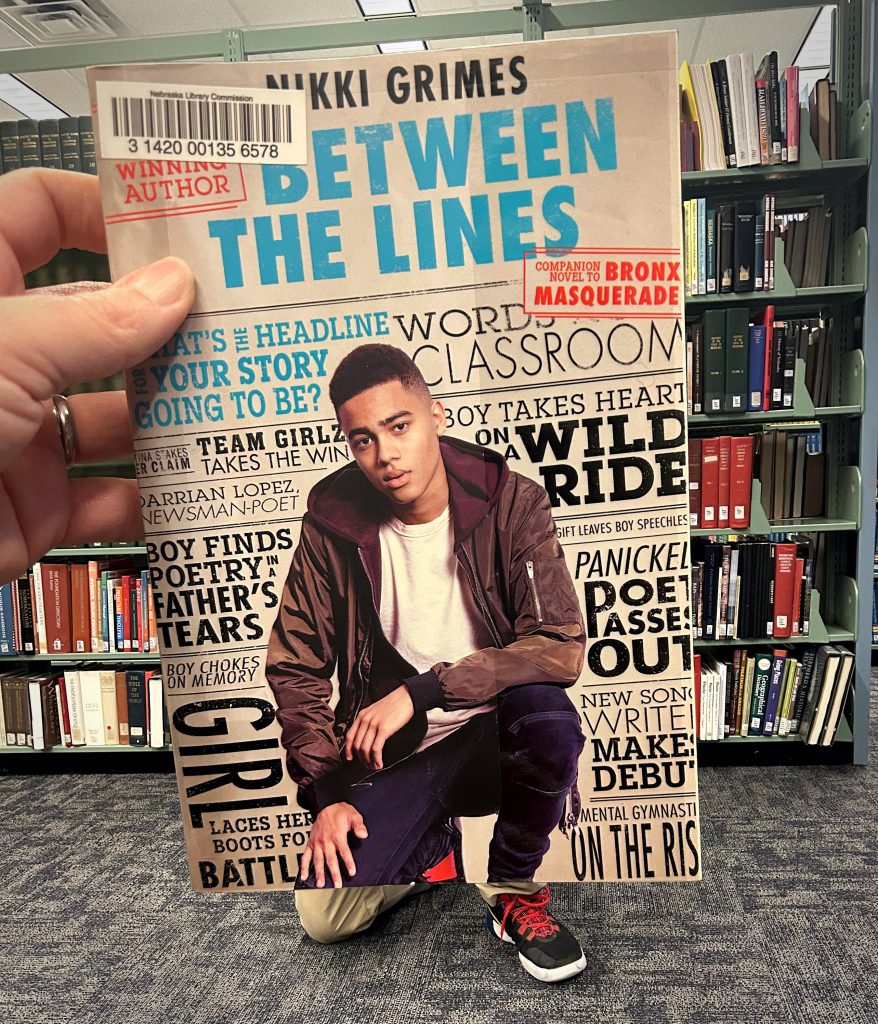
This week’s #BookFace is the 2024 selection for One Book for Nebraska Teens “Between the Lines” by Nikki Grimes (Nancy Paulsen Books, 2019).
In case you missed it, this week’s NCompass Live was all about our One Book for Nebraska Kids and Teens program, you can still watch the recording and find out all about the program on the NCompass Live webpage. This book is available as a part of our Book Club Kit collection; we have ten copies along with a discussion and activity guide. The Nebraska Library Commission has a large collection of children and young adult titles available to school and library book clubs. You can even search the collection based on grade level to find age and reading level appropriate books.“These complex students use poetry to find their truest voices and write their own stories. . . . Each character occupies his or her own space and no one character or voice monopolizes the story. The narratives of immigrants, foster children, families effected by incarceration, and teens taxed with familial burdens are thoroughly explored in a thought-provoking way. The poems and voices are a perfect blend of the many facets of American teens’ lives. An excellent companion book that lends itself easily to a teacher’s poetry unit, this is great choice for school and public libraries.”
—School Library Journal
Book Club Kits Rules for Use
- These kits can be checked out by the librarians of Nebraska libraries and media centers.
- Circulation times are flexible and will be based upon availability. There is no standard check-out time for book club kits.
- Please search the collection to select items you wish to borrow and use the REQUEST THIS KIT icon to borrow items.
- Contact the Information Desk at the Library Commission if you have any questions: by phone: 800/307-2665, or by email: Information Services Team
Love this #BookFace & reading? Check out our past #BookFaceFriday photos on the Nebraska Library Commission’s Facebook page!

